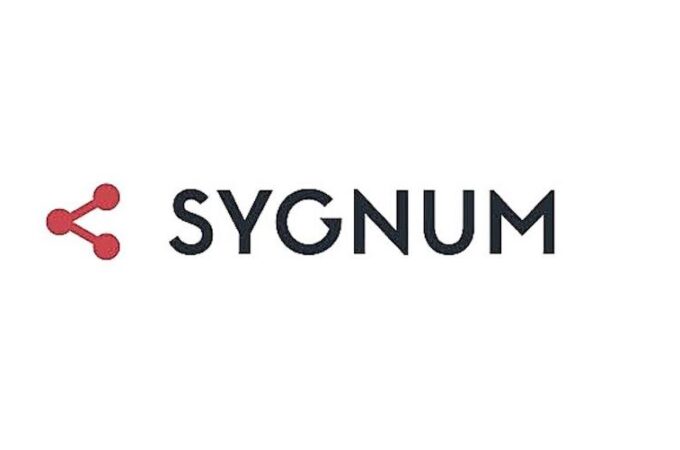
Why startups can’t disrupt the mortgage industry
By Aaron Larue for Techcrunch.com
Home loans are the Holy Grail of online lending. They come with high loan balances, steady returns and hefty fees. There also is a healthy liquid market for the securitized loans, and the debt is asset backed, which reduces risk and opens up the investor pool. On top of that, “establishment” mortgage lenders are not leading the pack with innovation, which means there is a lot of room for improvement.
So why can’t startups disrupt the mortgage industry?
I can already hear you yelling — “There are plenty of companies!” And there are. But comparatively, even the companies that are doing well and gaining traction still have a ways to go.
For instance, Quicken Loans is massive, but they are the exception, not the rule.
They have managed to overhaul the lending process in a very innovative way, streamlining and simplifying the process — but they have had issues addressing the next wave of tech-enabled first-time home buyers. Many young, startup size companies wouldn’t have survived the backlash Quicken Loans received from their Super Bowl ad.
There are other companies doing innovative things, and they are definitely gaining traction — but they are a drop in the bucket compared to the rest of the mortgage market.
Let’s take a look at some technology companies I think are doing a great job in this space. My data here is limited, but I think it provides some context:
- Sindeo wants to do $1 billion in funding for 2016, according to CEO Nick Stamos.
- Lenda did $60 million in originations between the summer of 2014 and November 2015.
- SoFi, according to this November 2015 Forbes article, was originating $50 million per month, or $600 million per year on an annualized basis. They did not return my request for comment, but I would guess they have grown significantly since then.
Selling home loans is not an easy task; each company should be proud of what they’ve accomplished so far. But for a point of comparison, let’s look at the top 200 loan officers in the country for 2015:
- The top loan officer for 2015 originated almost $645 million in loans — more than SoFi would do on an annualized basis based on their November 2015 volume.
- The top 64 loan officers in the country closed more than $60 million in loans. As a company, Lenda would rank No. 65 on this list.
- The bottom 40 loan officers on the list, No. 161-200, closed more than $1 billion in loans for 2015 — exceeding Sindeo’s company-wide goal.
I only point this out to provide some perspective. Every one of these companies offers a fantastic customer experience, has a solid marketing and sales machine and makes use of technology — so why is it they have a hard time outperforming some individual sales agents?
I think there are three types of mortgage lenders in this space, and each faces a major issue.
The three market approaches
Mortgages are a hard product to sell, and with increasing regulation and scrutiny, they are only getting harder. The industry as a whole is also ripe for innovation and disruption. These factors have created three camps when it comes to mortgage companies, and they’re all fighting for market share:
- The “start from scratch” approach. Some programmer, entrepreneur or visionary buys a house and realizes how broken the loan process is. Inspired, they decide to tackle the issue head on. They take a blue-sky approach, as an outsider, and build a mortgage company.
- The “expanding products” approach. These are companies that took a “start from scratch” approach and entered a different area of online lending — student loans, personal loans, peer-to-peer lending, etc. With some experience under their belts, a functional platform and an existing customer base, they decide to enter the mortgage market.
- The “innovative mortgage lender” approach. Mortgage companies smell blood in the water (it’s their own). They realize that, without some sustaining innovation, they could lose their business to a disruptive up-and-comer. They start to do whatever they can to keep pace.
The problem is, each of these three camps is missing something critical.
Mortgage companies are stuck
Mortgage companies have a hard time innovating. First, it’s hard to attract and retain the type of talent required to build an innovative market solution. Second, they are not the type of company to raise a large round of venture capital.
With an operating business in an established industry vertical, they are valued on a much different metric, and usually have to free up cash flow for any type of investment (like building technology).
Disruptive innovation doesn’t require a blank slate.
With constraints on cash and expertise, most mortgage companies are left to piecemeal together an online lending solution. Using third-party providers, they string together a number of platforms in an attempt to cover the required features that the modern borrower has come to expect.
The problem is these tools will have to integrate with the legacy systems the mortgage lender is already locked in to. So instead of tackling the entire process, and having to integrate with tons of complex systems, third-party providers focus on a narrow aspect of the experience (like document upload or taking the initial loan application).
Each piece of third-party technology will also require its own user accounts, dashboards, verification/security protocols and workflows. This “platform overhead” only compounds as you add more features, leading to a fragmented and potentially frustrating customer experience.
Technology companies are stuck
The other two technology-centered camps have the talent and can raise the money. They can build slick tech platforms, create a unified and cohesive customer experience and have the potential to provide market-leading customer service.
The problem comes from operations. A scalable mortgage company needs a lot of infrastructure:
- It needs financial infrastructure to create consistent access to capital and a smooth funding process. It also needs to participate in the secondary mortgage market to create liquidity.
- It needs compliance and reporting infrastructure to ensure it’s compliant with the smorgasbord of laws that mortgage lending is subject to. Not only that, a scalable mortgage company must be prepared to tackle the reporting requirements that come with the territory, and will need to have the financial reserves and personnel to handle things like the inevitable CFPB audit.
- It needs robust operating procedures. Originating mortgages is complex, requiring a deep bench of specialized employees — from licensed loan officers to underwriters to secondary market traders. To scale, you need an efficient, consistent and repeatable assembly line process (Quicken has mastered this; maybe it has something to do with being in Detroit.)
This is not just a problem for companies coming from the technology side — established mortgage companies can struggle with these things, too.
Innovation is great, but without nailing the fundamentals, it’s hard to scale.
When faced with the realities of originating a mortgage, many of these technology companies will pivot. Instead of producing the actual loans, they’ll become sales and marketing vehicles that capture the customer, take the application then serve as a broker for an established mortgage company that can do the heavy lifting.
How do we innovate?
If all three options have flaws, what’s the answer?
I don’t think we’re doomed to live in a world of clunky and frustrating home financing. But I do think there is a large gap in the consensus way of innovating in this space.
Ideally, an innovative mortgage company would combine a customer-focused, experience-driven product team with a group of seasoned mortgage professionals. This super-team would come together, surrounded by the infrastructure required to grow and fed with capital to invest in building a platform, and they could fundamentally change the way home loans are done.
I think one way to make this happen is through VC or private-equity-backed acquisitions of existing mortgage lenders.
Selling home loans is not an easy task.
Disruptive innovation doesn’t require a blank slate. Small mortgage companies, operating on a call center model, already do business without being face-to-face with their customers. Doing business online is the logical next step. They have the financial infrastructure in place and understand the operational requirements to do business. The best part is they might even make some money.
A solid product team, backed by venture capital or private equity, could purchase one of these lenders for a reasonable amount of money (Series A-size capital), and at a valuation multiple that is much lower than your everyday technology company.
Once in the door, they could overhaul the technological foundation of the company, work to build a better customer experience and add innovative technology that’s developed in-house. Instead of encouraging consumerism, they could focus on educating their prospects into being responsible home buyers.
Launching features rapidly, focusing on the customer and unconstrained by infrastructure, they would be poised for tremendous growth.
Rethinking fintech
Wall Street has been dipping into the VC space, investing in mega-rounds with unicorn companies andgetting in early with fintech startups. Major banks have been buying, investing in and partnering with startups. BBVA has been active in this space, and Santander has recently invested in and partnered withsmall business lender Kabbage. I wouldn’t be surprised to see activity like this bleed into the online mortgage space.
Hybrid funds like Mithril might also be interested in this type of approach because they focus on large, highly concentrated investments in “established companies that are leveraging tech in some way but are not necessarily tech companies.”
Also, I wouldn’t be surprised to see some of the larger players in the space, like SoFi, acquire an existing mortgage lender to beef up their operations, staff up on area experts or eliminate some growing pains.
Mortgage companies aren’t the only area in the financial world that are plagued with legacy systems, complex regulations and the need for robust infrastructure to scale. Could “M&A Innovation” be the logical extension of this trend?
FEATURED IMAGE: ROMAKOMA/SHUTTERSTOCK
First appeared at techcrunch.com





